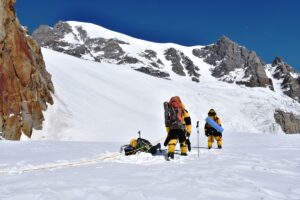নতুন এক অভিযান আর শীতকালীন পর্বতাভিযানে প্রথম সফল আরোহণের আকাঙ্ক্ষা...
Read MoreWinter Trek & Expedition
Winter Trek & Expedition :
Traditionally, one exquisite aspect of mountaineering had been the absence of definite rules. It was all about ethics and self-regulation. However, with the development of new skills and styles, it became almost a necessity to categorise different kinds of climbs separately – like new routes, traverses, solo ascents, alpine-style climbs etc. Reaching the summit in wintertime got the obvious name of ‘winter ascent’ but unlike other categories, the boundaries of winter ascents are not so definite.
What divides autumn and winter? There is no definite answer to this question, as the start date of winter varies from culture to culture and region to region. Traditionally, Nepalese and Chinese governments issued winter climbing permits starting from December 1st.
However, the modern rules follow the calendar season definition of winter, “a climb that takes place between December 21st and March 21st.” A perfectionist approach further restricts that from arrival at BC to departure, everything should happen between the dates mentioned above.
Hence, today those expeditions with the summit reached before Dec 21st are marked as late autumn climbs and don’t appear in winter lists. It’s agreed that winter climbing should adhere to the calendar winter time frame. Climbing should start no earlier than Dec 21st and should end before March 21st.
Timings and procedures of winter trek will follow the same.
Winter Trek & Expedition by Sonarpur Arohi:
Winter Expedition to Mt. Deo-tibba: 2021
Winter Expedition to Mt. Deo-tibba: 2021 Team Strength – 2...
Read More

